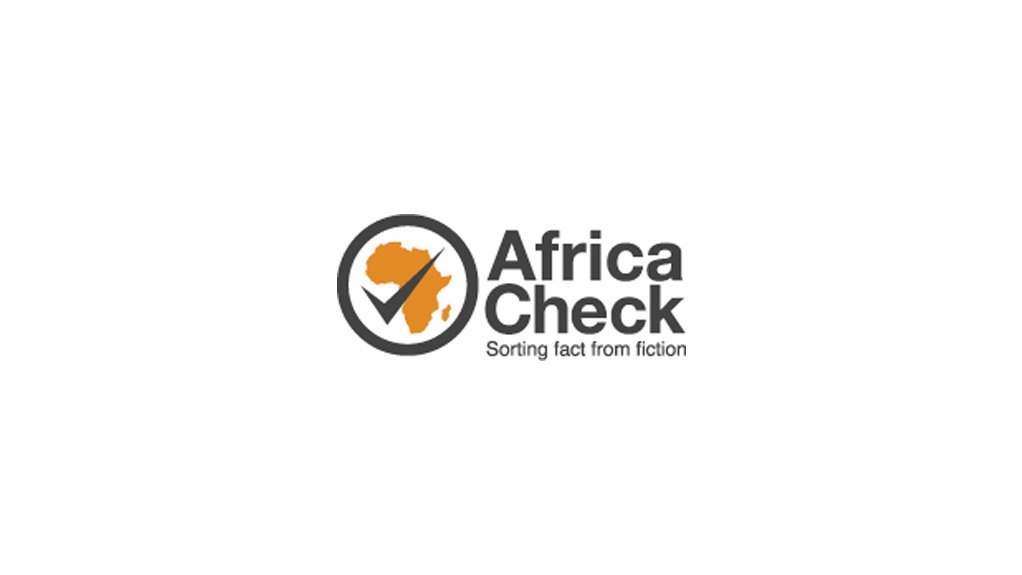But Ruto will travel to Beijing in October 2023 to seek more loans and negotiate softer repayment terms. He is under pressure at home to repay public debt, while a weakening local currency has significantly increased the amount due on the country’s dollar-denominated external debt.
The president has promised not to default, and has instead sought to raise more money internally, including through unpopular taxes and increased domestic borrowing.
On 11 September, Africa Check’s artificial intelligence (AI) tools picked up a claim on a Kenyan news site, Capital News, which quoted the president highlighting an alarming debt repayment trend.
“Kwa sasa hivi, kati ya shilling kumi ambayo tunaokota kama ushuru, shillingi sita kwa shilling kumi tunatumia kulipa madeni,” Ruto said in Kiswahili.
This translates to: “Out of every KSh10 collected as tax revenue, KSh6 goes towards debt repayment.”
The president was speaking at a church service in Laare, Meru county, 277 kilometres north-east of the Kenyan capital, Nairobi. He warned that if borrowing was not curbed, debt servicing could consume all the country's revenue.
But is Kenya spending 60% of its tax revenue on debt service? We crunched the numbers.
What counts as tax revenue?
Ruto did not give the source of his figures. We contacted Hussein Mohammed, the State House spokesperson, for the source of Ruto’s figures. We will update this report when we hear back.
According to the World Bank, “tax revenue refers to compulsory transfers to the central government for public purposes”.
The Kenya Revenue Authority collects taxes for the government. The types of taxes listed on its website include income or direct tax, value added tax, excise duties and customs duties.
We asked Benjamini Muchiri, a senior national accounts manager at the Kenya National Bureau of Statistics for data to help verify this claim. He referred us to the annual debt reports of the national treasury.
The most recent covered the 2021/22 financial year, which ended on 30 June 2022, and put debt service as a percentage of revenue at 47.9%.
The report also predicted that the figure would rise to 55.7% in the 2022/23 financial year which ended on 30 June, and higher, to 58.9%, in the 2023/24 financial year.
John Kinuthia is a senior programmes officer at the Kenya office of the International Budget Partnership, a global budget transparency organisation. He told Africa Check that the tax revenue used to repay the country’s debt varied from year to year because of “different annual payment obligations”.
The projections for debt service in a financial year are usually close to the actual because the debt service to revenue ratio is calculated using the amount of debt due for the year.
“The projected figure sometimes changes for various reasons, including debt restructuring and the exchange rate,” he said.
Most recent figures
Is there more recent data? It could be found in the office of the Controller of Budget, Noah Wamalwa told Africa Check. He is an assistant programme officer in charge of public finance management at the Institute of Economic Affairs-Kenya. The budget controller’s office publishes annual reports on government spending.
The most recent report was published in August 2023 and covers the 2022/23 financial year.
|
Kenya debt service as a percentage of revenue |
|||
|
Financial year |
Tax revenue (KSh billion) |
Debt service (KSh billion) |
Debt service as a portion of revenue (%) |
|
2021-22 |
1,840 |
847 |
46.1 |
|
2022-23 |
1,962 |
1,153 |
58.7 |
Source: Controller of Budget reports 2021-22 and 2022-23.
Note: Revenue and service figures have been rounded off.
The budget controller warned that the “continuous depreciation of the Kenya Shilling” was going to “increase the amount required for loan repayments” in the 2023/24 financial year.
According to the country's central bank, the shilling has lost more than a quarter of its value – 26.2% – since 2022. It currently trades at around KSh149 to the dollar, down from an average of KSh118 in 2022. In 2021, the shilling-dollar exchange was an average KSh110.
“This will erode the government’s fiscal space and limit the implementation of other critical policies and programmes, resulting in budget adjustments,” the office said in its latest report.
Publicly available information therefore shows that Ruto's estimate that KSh6 out of every KSh10 collected as tax goes towards debt repayment is well within range.
Conclusion: Kenyan president’s claim that 60% of tax revenue goes to debt repayment is supported by data
William Ruto has been burning the midnight oil trying to balance the country's books.
If the country's borrowing is not curbed, debt servicing could consume all the country's revenues, the president warned, even as he prepared to go to China to borrow more.
His estimate of KSh6 out of every KSh10 collected as tax revenue going towards debt repayment is supported by the latest publicly available data.
This report was written by Africa Check., a non-partisan fact-checking organisation. View the original piece on their website.











